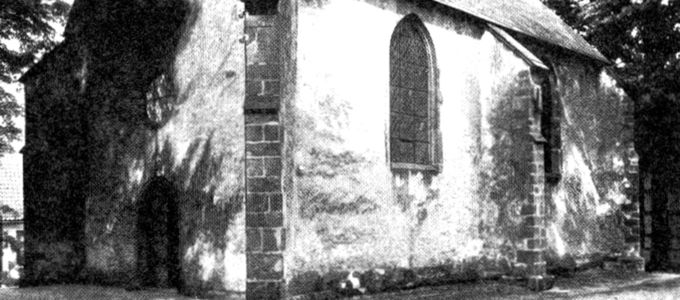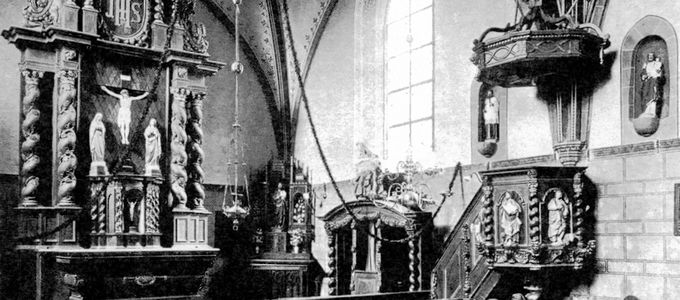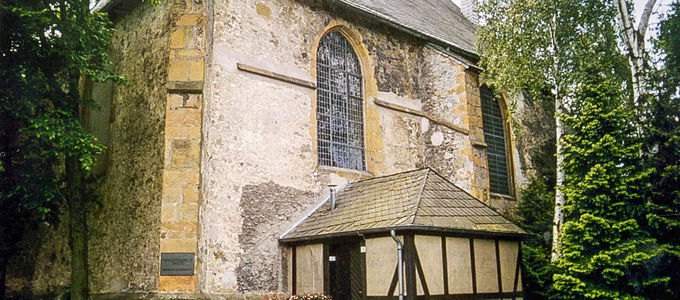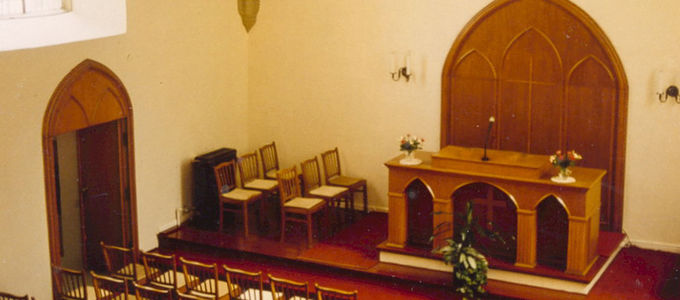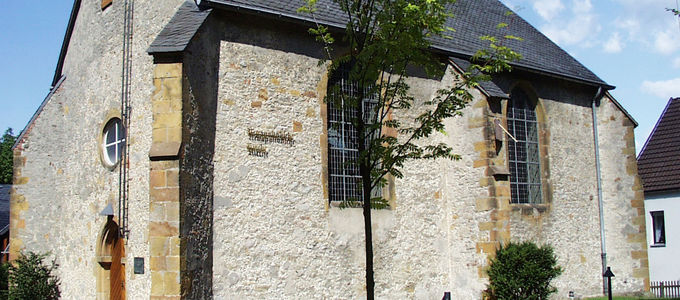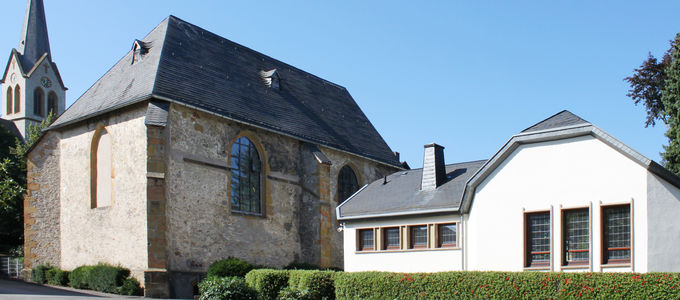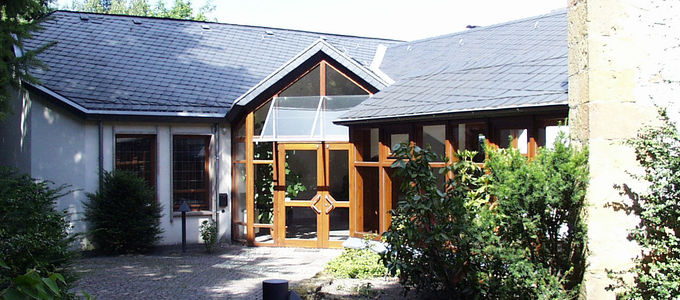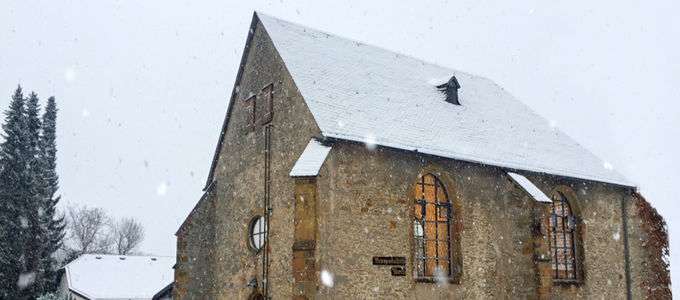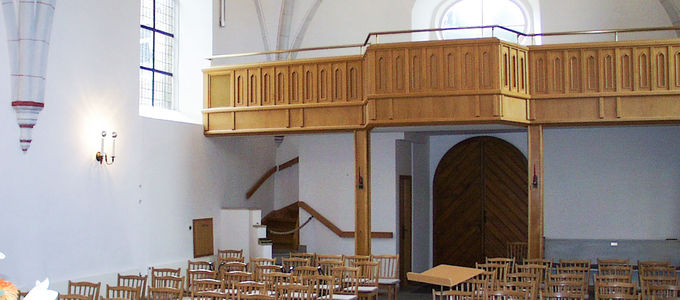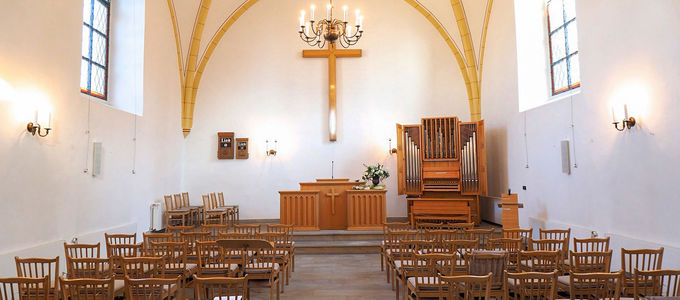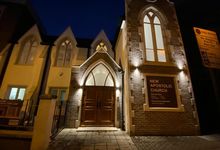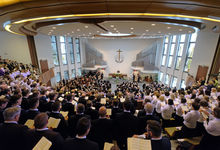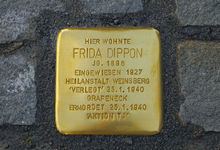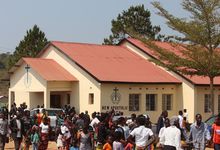A church building of monumental age
A New Apostolic church building that is 350 years old—you don’t see that every day. But the Schildesche quarter of the city of Bielefeld is home to a venerable historic monument that still keeps our attention today. A little excursion into history.
“Schildesche” means something to the effect of a seed field in the shape of a shield. And indeed, a good harvest can only result from a good seed—and that was indeed the case in this story: a little chapel known as the Kerken Johannes over den Dieken (St John’s church above the ponds) was erected here some 1,200 years ago. A good 860 years later, its stones were used as building material for a new church. How did this come about? In the tenth century, a wealthy widow by the name of Marswidis founded an institution for devout ladies on her farm. They called themselves canonesses —religious women with shared accommodations. So it was that a convent-like complex with eight courtyards was constructed on the property. Marswidis then travelled to Rome and came into possession of some relics of John the Baptist. This chapel of St John eventually became a collegiate church, but fell prey to a fire in around 1250.
One congregation splits into three
The upheavals that followed in the throes of the Reformation were even more dramatic. The movement came to Schildesche in the middle of the sixteenth century—with all of its immense social and ecclesiastical implications. The Catholic unity of the foundation suddenly became history. In an exercise of religious comparison, the Schildesche Abbey was split up into three parts in 1672: from then on, one third of the women of the institute had to be Lutheran Protestant, one third had to be Reformed Protestant, and one third had to be Roman Catholic. The latter group required a new church—namely the aforementioned chapel of St John.
Great faith, but very little money
In 1686 they were allowed to demolish the old St John’s chapel and move it to another place in Schildesche at their own expense. This was actually already the birth of the modern church building! A school and a sexton's apartment were also to be built at the new location, but these plans were cancelled due to a lack of finances. There were shortages all around, and the Catholic founding members were now the minority. The Protestant canonesses gave them neither candle wax, nor wafers, nor wine. The financial problems were great. But ultimately, the foundation stone for the new chapel was laid on 6 July 1688. It bears the initials “JMJ” in reference to Jesus, Mary, and John.
The masonry work was completed in that same year, and the first church service for the small community was celebrated in winter 1688. In 1694 it was officially consecrated by the Vicar General, Jodokus Frihoff. The chapel of St John was used as a Catholic place of worship until the year 1912. Thereafter the building was emptied: the baroque pieta, the altar, and the reliquary box brought to the newly built local Catholic church, and the city of Bielefeld temporarily took over the St John’s chapel, which had in the meantime been designated as a protected monument, in order to save it from falling into decay.
New occupants, new life
In 1950 new life moved into the congregation once again: the New Apostolic Church began renting the chapel for its divine services. Ultimately both the property and the church building were purchased from the city of Bielefeld. Building extensions had to be approved by the historical preservation office, but the addition of some fellowship rooms was ultimately permitted. A transparent passage constructed of glass now connects the new wing with the old chapel. On 16 December 1990, the then District Apostle Hermann Engelauf came to dedicate the newly renovated building.
A long history that continues to this day.
Article info
Author:
Date:
Keywords:
Peter Johanning
13.08.2020
church architecture,
churches,
Denominations,
Congregational life


